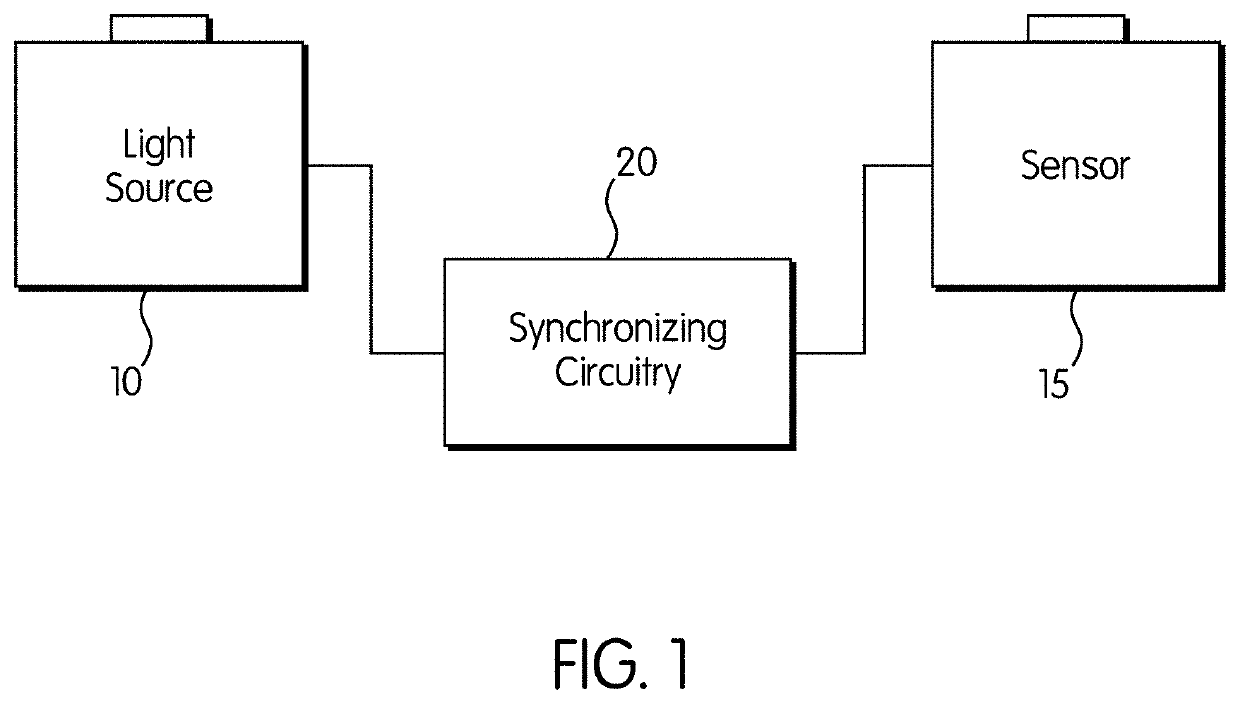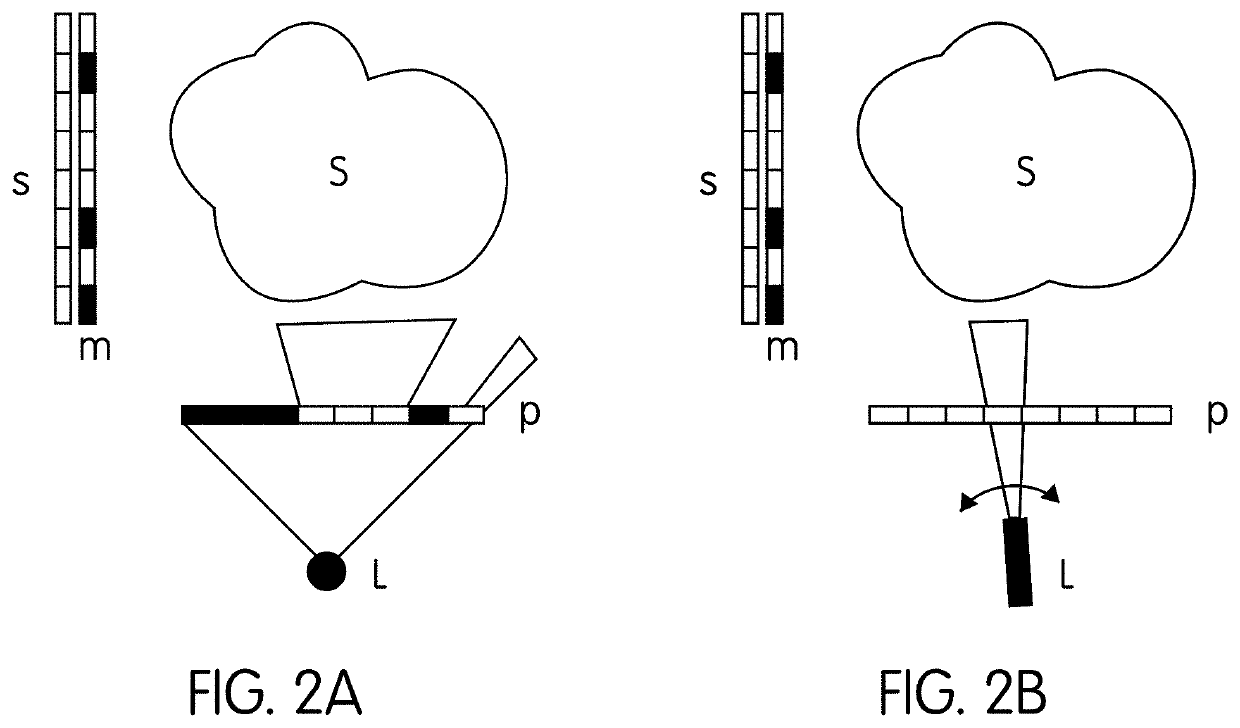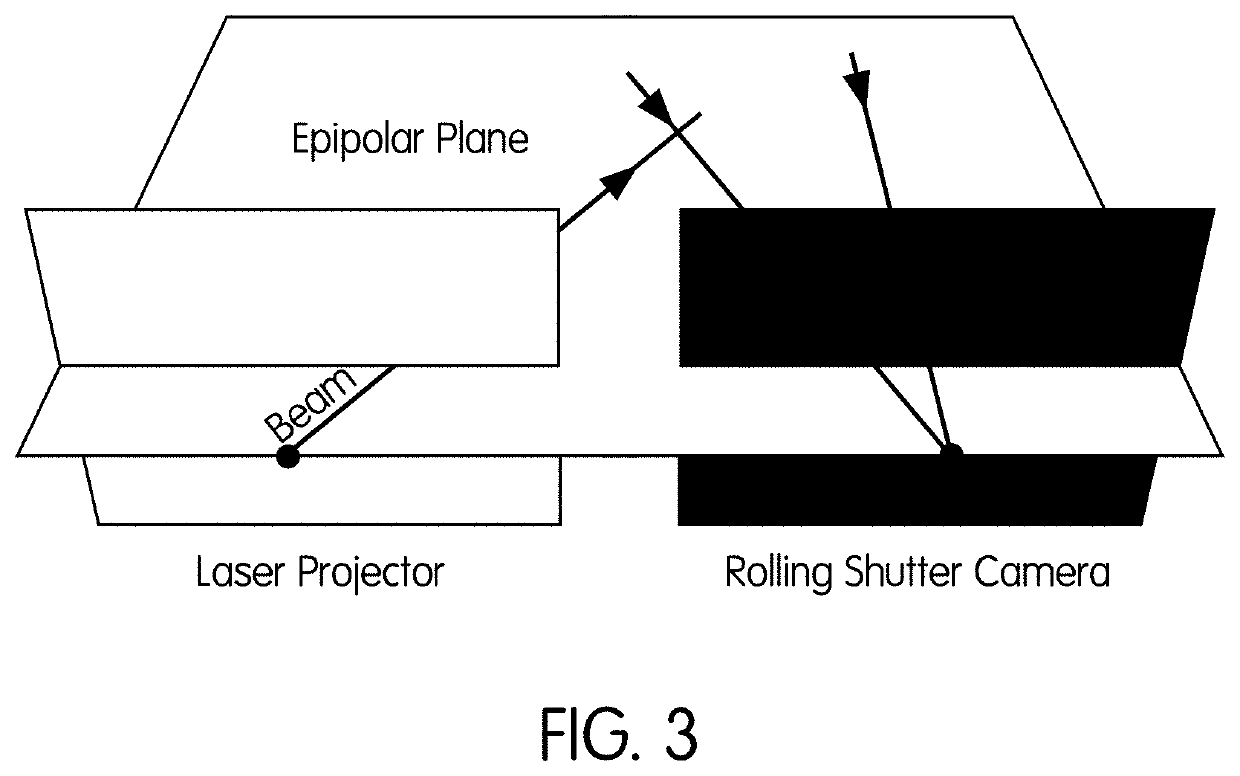Energy optimized imaging system with 360 degree field-of-view
a technology of energy optimization and imaging system, applied in image enhancement, image analysis, instruments, etc., can solve the problems of inefficient power consumption of current use devices, inefficient practice, and inefficient lighting source, etc., to achieve far more optical components, far more computation, and far more expense.
- Summary
- Abstract
- Description
- Claims
- Application Information
AI Technical Summary
Benefits of technology
Problems solved by technology
Method used
Image
Examples
Embodiment Construction
[0021]A widely known truth in the field of image capture is that to optimally capture images with the most detail and least noise, the light throughput between the light source and the photosensor must be optimized. This invention implements this maxim while at the same time allowing for selective blocking of light paths between the light source and photosensor. The system topology that results from this optimization also allows for never-seen-before imaging techniques and energy efficiency.
[0022]There are three main parts to the invention as currently implemented, interconnected as shown in FIG. 1: a directable light source 10, a sensor 15 and, crucial to this invention, a synchronizing controller 20 that synchronizes the active region of sensor 15 to the beam direction of light source 10 in accordance with an optimizing equation, discussed below.
[0023]As used herein, the term “directable light source” is a controllable light source that emits different amounts of light in differen...
PUM
 Login to View More
Login to View More Abstract
Description
Claims
Application Information
 Login to View More
Login to View More - R&D
- Intellectual Property
- Life Sciences
- Materials
- Tech Scout
- Unparalleled Data Quality
- Higher Quality Content
- 60% Fewer Hallucinations
Browse by: Latest US Patents, China's latest patents, Technical Efficacy Thesaurus, Application Domain, Technology Topic, Popular Technical Reports.
© 2025 PatSnap. All rights reserved.Legal|Privacy policy|Modern Slavery Act Transparency Statement|Sitemap|About US| Contact US: help@patsnap.com



